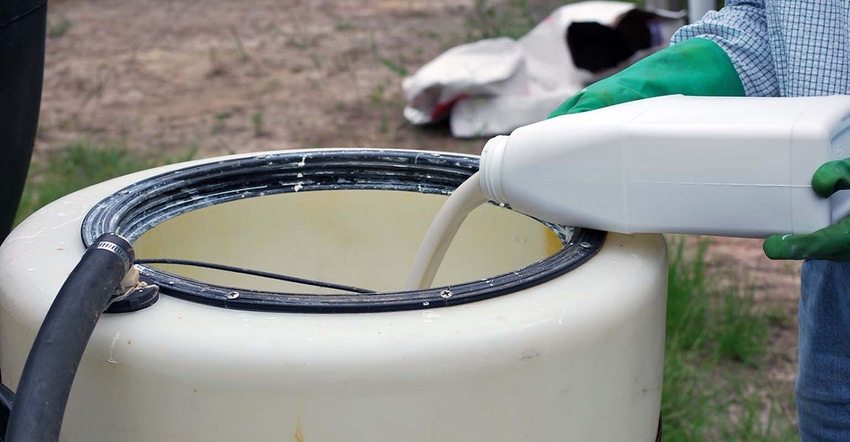
There was a time we could depend on science, for the most part, guiding the regulatory way, no matter which way the political or activist winds blew. Can’t take that for granted.
Farmers this and next year face a supply shortage on preferred products and potentially massive price increases for herbicides, fungicides, and fertilizer. And the industry will continue to face regulatory challenges on proven products used by growers.
For example, in October 2020, then EPA administrator Andrew Wheeler announced the five-year registration for dicamba, which included additional restrictions on tank mixing, downwind buffer requirements, and cutoff dates for over-the-top applications. The label was simplified with better directions for growers. (By the way, Wheeler made the national announcement on a farm in Brooklet, Ga.)
In September, Jacqui Fatka, Farm Progress policy editor, reported on a speech given by Michael Regan, the current EPA administrator, at the National Association of State Departments of Agriculture annual meeting.
At the time, Regan said the agency was “still receiving and analyzing new incident information (regarding dicamba) and working very closely with state regulators to understand the conditions on the ground. EPA is extremely concerned about these reports and is taking steps to better understand the nature and the severity of these incidents in order to assess the sufficiency of the mitigation in the 2020 decision, and, if necessary, take appropriate regulatory action.”
As of mid-November, the agency hasn’t clarified what, if any, “appropriate regulatory action” may be, leaving the industry uncertain.
Another example is chlorpyrifos, which was in regulatory limbo for years. In August, EPA followed the most-recent court orders against the insecticide and issued its final intent to revoke chlorpyrifos. No longer available to use for farmers.
Nov. 12, EPA released its finalized biological evaluations for glyphosate, atrazine and simazine, saying all three herbicides are ’likely to adversely affect’ one or more species listed under the Endangered Species Act or their designated critical habitats. “These evaluations encompass all registered uses and approved product labels for pesticide products containing these three herbicides,” EPA said in an announcement. No hard action has been taken but this puts fog over the future path of these essential pesticides.
Harrison Pittman knows more about ag law and litigations than most anyone in the country. He’s the director of the National Agricultural Law Center, a unit of the University of Arkansas System Division of Agriculture. This winter at the Southern Crop Production Association annual meeting, he said legal actions over the last few years and ones in the works now will lay the regulatory precedent path, for good or for bad, for ag products for decades to come. It’s a tough environment if you are a pesticide.
We’ve said it before, but it is worth saying again: U.S. Federal Insecticide, Fungicide, and Rodenticide Act guides EPA's efforts on regulation. FIFRA now is the gold standard, scientific approach for pesticide regulatory actions.
Politics and activism want FIFRA to take a more precautionary principle, or a pre-emptive regulatory path to reduce environmental or human risks from pesticides based on suggestive evidence and not necessarily science-based evidence. That’s not good.
U.S. farmers deserve a clear idea where regulatory winds blow. Growers can’t downshift plans or change directions on a dime. National and state grower-lead group know this and champion the need for regulatory clarity. The groups do a good job keeping an eye and ear out for regulatory issue for their side of the field.
But there is a local level we all can participant in on. When you hear about a slippery regulatory issue, either through your group or through Farm Press, it’s a good idea to bring it up to your local representation. You can bet the activists are well-heeled and pulling the ears of every elected official they can.
It’s good for elected official in state capitals or at the highest national levels to tell friendly lobbyists, that, yes, I have heard about this and they are talking about on farms back home, and this is what they are saying.
About the Author(s)
You May Also Like






